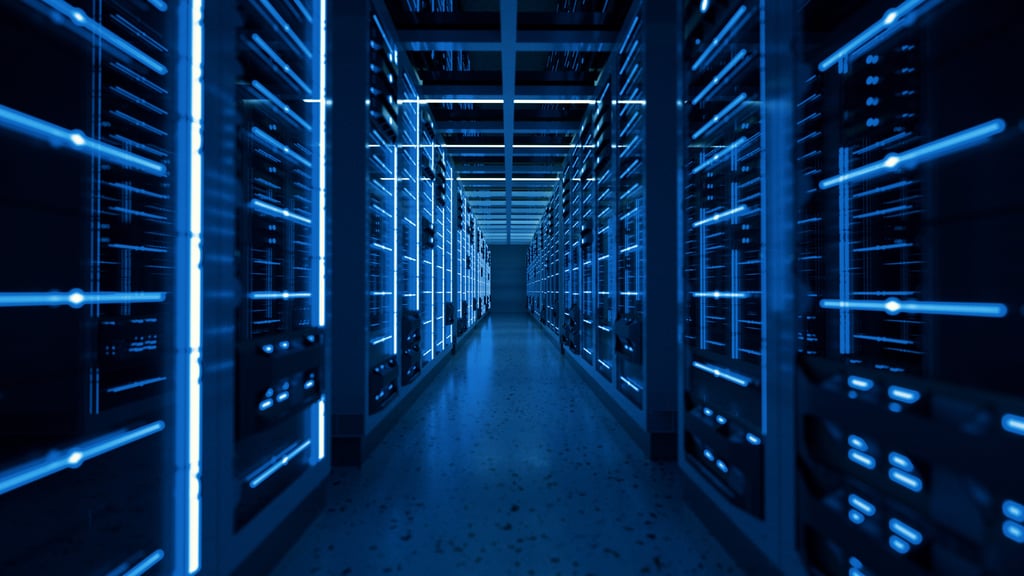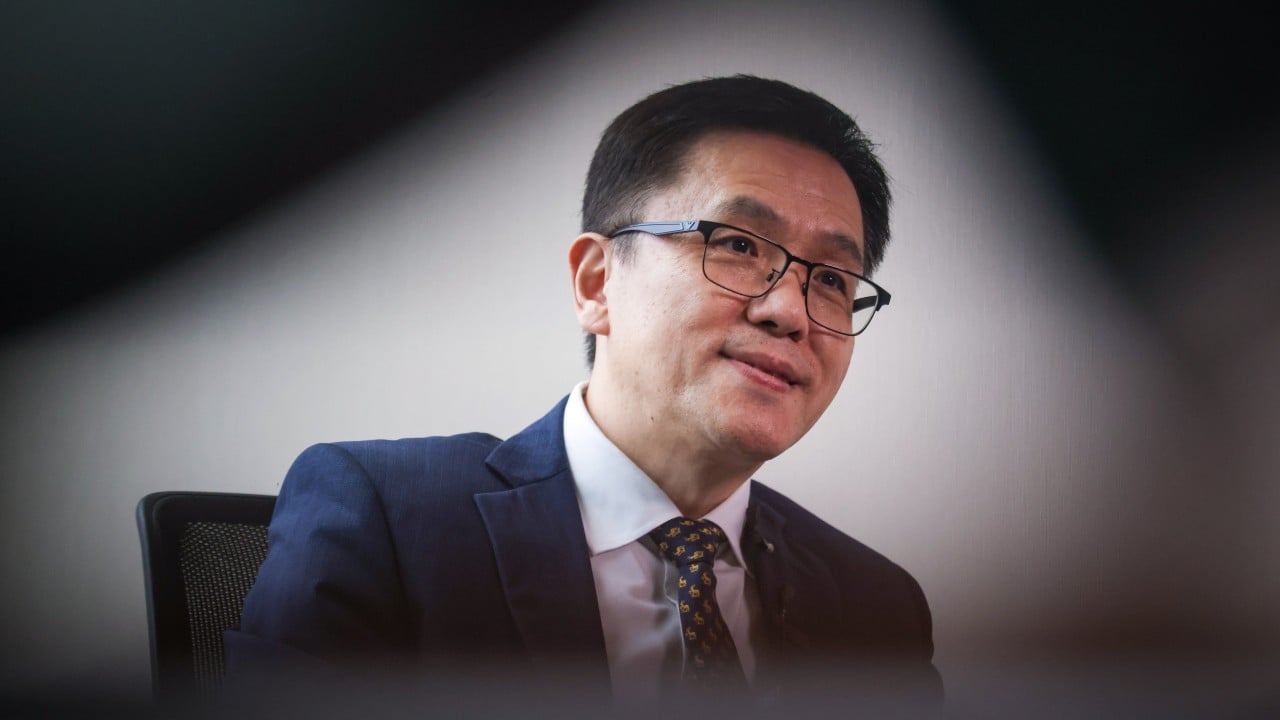Hong Kong’s technology minister has revealed plans to build up the city’s artificial intelligence (AI) supercomputing power and roll out a more “aggressive” version of a venture capital fund to attract fresh investment in start-ups.
Sun Dong, the secretary for innovation, technology and industry, told the Post he expected that private institutions in the coming Northern Metropolis would produce 10,000 petaflops of AI computing power by 2030, on top of the 3,000 petaflops provided by the AI Supercomputing Centre by the start of 2026 at the earliest.
A petaflop is a measurement of a computer’s speed and is equal to a quadrillion operations per second.
“It means a lot to Hong Kong. When we talk about AI development, we need to provide some basic infrastructure such as enough computing power,” Sun said. “For AI development, we need a lot of computing power to achieve our goal, to make the design, to train the data, to train the models and so on. These trainings will happen in the data centre based on the supercomputing power.
“Because of this very important infrastructure, we can attract international companies to come to Hong Kong to develop their businesses, to utilise our computing power.”
A government-commissioned study completed this year estimated the demand for computing power in Hong Kong would rise to 15,000 petaflops by 2030.
Sun said he hoped some of the 10,000 petaflops could be provided by private companies that set up in Sandy Ridge, part of the metropolis intended to serve as an “international data park”, while another 2,000 petaflops would be supplied by research and development (R&D) institutes and universities.
“In the next one or two years, we will provide a total of 5,000 petaflops to meet our strong demand for local economic development, as well as for the research,” he said.
Financial Secretary Paul Chan Mo-po said in this year’s budget address that the first phase of the AI Supercomputing Centre could begin operating at Cyberport as soon as this year.
Its expected computing power could reach 3,000 petaflops, equal to processing nearly 10 billion images an hour, by the start of 2026 at the earliest.
Cyberport would also be given HK$3 billion (US$384.7 million) to launch a three-year AI subsidy scheme to encourage local universities, research institutes and enterprises to “leverage the centre’s computing power and achieve scientific breakthroughs”, Chan said.
The Northern Metropolis project calls for turning 30,000 hectares of land near the city’s border with mainland China into a new economic centre based around innovation and technology (I&T), as well as research and development (R&D).
A key component of the project is the controversial 600-hectare San Tin Technopole, which calls for building on ecologically sensitive wetlands and fish ponds. Earlier this month, the High Court granted an application for a judicial review of the government’s decision to approve the environmental impact report on the project.
Sun declined to discuss the legal proceedings in detail but said the government would strive to start the hearing as soon as possible to reduce the impact of the judicial review on the progress of the project.
The minister also revealed the government would examine the operation of its Innovation and Technology Venture Fund to ensure it was “more aggressive” and “market-oriented” in attracting investments in start-ups, hinting that new measures would be rolled out soon.
The HK$2 billion fund, established in 2017, has invested HK$270 million in 35 local start-ups, while attracting about HK$2.5 billion in private investment.
“Based on this figure, we worked well. But looking ahead, we need to accelerate our industry development, we need to speed up,” Sun said. “Currently we are reviewing this scheme and will roll out as soon as possible new initiatives, which will be more market-oriented and perhaps more aggressive, and more importantly, we will be working with more private capital to support our hi-tech start-ups.
“The government will be more heavily involved in this funding, and maybe also introduce more private funding as limited partners to work together with the government funding to do that.”
Sun admitted that Hong Kong’s industrial investment in research and development, at 1.07 per cent of gross domestic product (GDP), was “relatively lower” compared with rivals such as Singapore, where R&D contribution was nearly 2 per cent.
“The most important thing is we need to attract the industry to make more investments in I&T,” he said. “Right now, more than 50 per cent of investment in R&D is from government support. We hope in the near future … more than 50 per cent of investment should be from the industry.”
Manufacturing was also a critical aspect of the economy, he noted, pointing to the emphasis Singapore and Shenzhen placed on the sector.
“The percentage of manufacturing in GDP is about 20 per cent in Singapore. It is more than 30 per cent in Guangdong province. Look at Hong Kong, we only have 1 per cent that comes from the manufacturing industry,” he said.

The government’s I&T development blueprint calls for increasing the contribution of the manufacturing sector to GDP from 1 per cent to 5 per cent by 2032.
But Sun stressed that Hong Kong had its own unique advantages and comparing it with other places was of limited value.
“To be honest, I do not want to compare Hong Kong with [other] cities or countries because Hong Kong has its own distinctive advantages,” he said. “In one way, we enjoy great support from the motherland, and in the other way we are in a good position to be [more closely] connected to the world. This is a very unique advantage.”
Cyberport CEO Rocky Cheng Chung-ngam said AI computing power was crucial for Hong Kong as an international financial centre and its aspiration to become an I&T hub. Companies would need the power to carry out AI model training and develop their own versions to fuel business innovation, he said,
But 15,000 petaflops was “not a lot” compared with leading mainland tech companies able to produce hundreds of thousands of petaflops on their own.
He agreed with the government’s plan to acquire computing power in phases to prevent idle servers and ensure cost-effectiveness.
“For AI supercomputing centres, despite greater electricity use, their computational capabilities and operational efficiency are far more advanced than those of traditional data centres,” he said.
Lawmaker Duncan Chiu, who represents the technology and innovation sector, agreed the government had to take the lead in building up AI computing power in Hong Kong and create a foundation for entrepreneurs and researchers at universities.
“For the development in the coming 10 to 20 years, AI will bring a huge change to various sectors, so the provision of computing power is very crucial,” he said.
A gradual approach was needed in establishing 15,000 petaflops of computing power as there could be many breakthroughs in AI chips, their functions and algorithms along the way, requiring regular adjustments in the estimate of demand, Chiu said.
He agreed that private institutions could help produce the remaining 10,000 petaflops as the industry had expressed a keen interest and faced a high demand for power.
But electricity costs could be a concern and the government should explore options such as buying power from the mainland, the legislator said.
He also noted that under the Innovation and Technology Venture Fund, the government selected funds to co-invest in start-ups, whereas officials in other parts of the world would directly invest in funds that supported new companies, which was “a common practice in the industry”.
Hong Kong would be better served if it followed the practice of other places, he argued.


